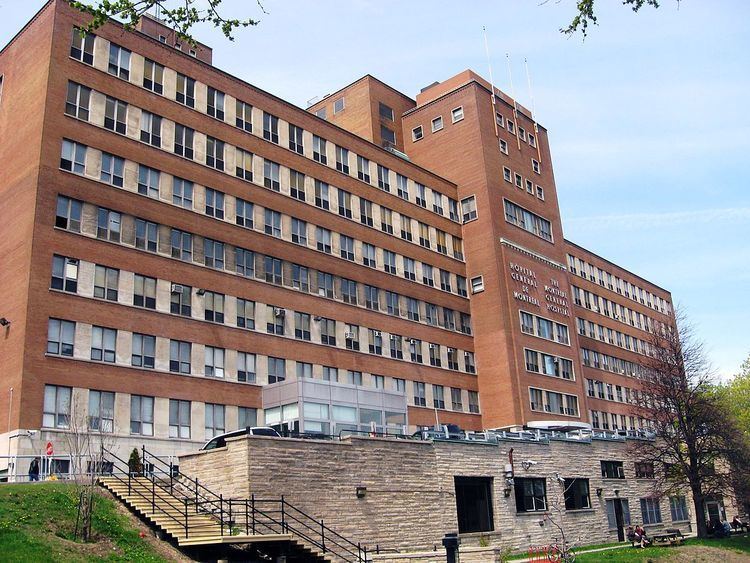Emergency department I Opened 1 May 1819 Province Québec | Beds 479 Phone +1 514-934-1934 | |
 | ||
Hours Open today · Open 24 hoursSaturdayOpen 24 hoursSundayOpen 24 hoursMondayOpen 24 hoursTuesdayOpen 24 hoursWednesdayOpen 24 hoursThursdayOpen 24 hoursFridayOpen 24 hours Similar Royal Victoria Hospital, Montreal Chest Institute, Montreal Neurological Institute a, Hôpital du Sacré‑Cœur de Montr, Hôtel‑Dieu de Montréal | ||
The Montreal General Hospital (MGH) (French: Hôpital Général de Montréal) is a hospital in Montreal, Quebec, Canada was established in the years 1818-1820. The hospital received its charter in 1823. It is currently part of the McGill University Health Centre (MUHC) and is located on Mount Royal, at the intersection of Pine Avenue (Avenue des Pins) and Côte-des-Neiges Road. It has six pavilions: A, B, C, D, E and Livingston (L); plus a research centre in a separate building next to the L pavilion.
Contents
The first MGH was built at the corner of Craig Street (today St. Antoine) and St. Lawrence Boulevard and only had 24 beds. Having outgrown this space, it moved to a new 72-bed building on Dorchester Boulevard (now René-Lévesque) at St. Dominique Street; today this facility is a long-term care centre. In 1924, the hospital merged with the Western General Hospital (currently the D & E wings of the former Montreal Children's Hospital) building at the corner of Tupper Street and Atwater Avenue. It moved to its current location in 1955.
The MGH has been designated by the Quebec government as one of two Level I trauma centres in Montreal, (the other being the Hôpital du Sacré-Cœur de Montréal).
The MGH has been affiliated with McGill since 1832 and was one of the very first teaching hospitals.
History
Fund-raising to establish an English hospital in Montreal was undertaken in the years 1818-1820. The growing needs of the English-speaking population led to several charities, among them the Female Benevolent Society of Montreal and the Society for the Relief of Immigrants, to ask for help in building a new hospital. At this time, Montreal had two hospitals: the Grey Nuns' Hopital General and the Hôtel-Dieu de Montréal).
In 1819 enough money had been received to lease a building on Craig Street to accommodate 24 patients and this small hospital opened on May 1, 1819. By 1820 enough money had been subscribed to purchase property on Dorchester and St Dominique streets. The cornerstone of the new Montreal General Hospital was laid in 1821 and the 72-bed hospital building opened in 1822. The hospital received its first dharter in 1823.
At the same time four Edinburgh-trained physicians Andrew Fernando Holmes, William Robertson, William Caldwell and John Stephenson were working to establish medical teaching in Montreal. They founded the Montreal Medical Institution in 1823 as a teaching unit of the hospital. In 1829 the Institution became part of McGill University, then known as McGill College. It was McGill`s first faculty and Canada`s first faculty of medicine.
On May 30, 1955, the Montreal General Hospital moved to its present location near Mount Royal on Cedar Avenue, at the corner of Côte-des-Neiges Road and one block north of Pine Avenue.
Redevelopment
The present location of the MGH is sited for the expansion and development into the MUHC Mountain campus, which will house the cardiac critical care and level one trauma centres. The campus will also be the future site of the Montreal Neurological Hospital upon its relocation from its present site near McGill University.
